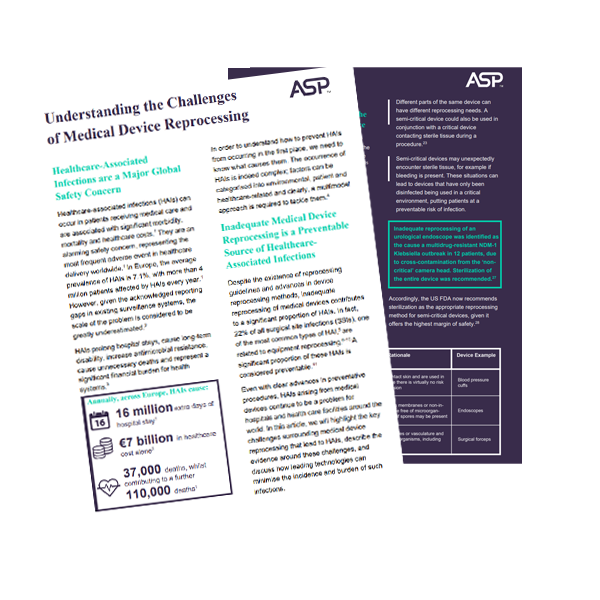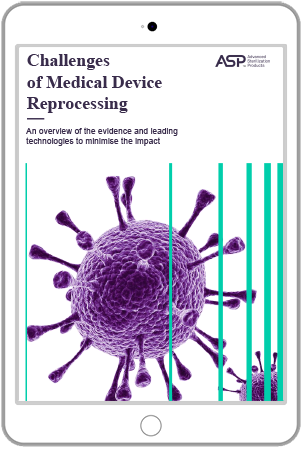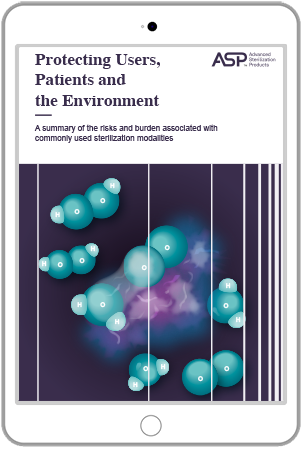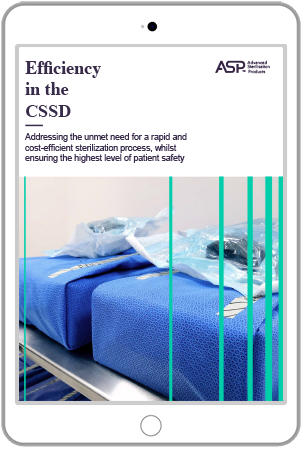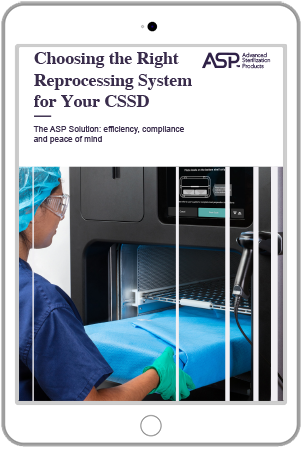e-Book #1: "Challenges of Medical Device Reprocessing"
SUMMARY OF TOPICS
✔ Healthcare Associated Infections (HAIs) are a Major Global Safety concern and are linked to significant morbidity, mortality and healthcare costs. Surgical Site Infections (SSI) are one of the most common types of HAIs
✔ 22% of all surgical site infections (SSIs) are related to inadequate medical device reprocessing, that indeed represents a preventable source of HAI
✔ High temperature sterilization methods can damage heat and moisture sensitive devices.
✔ Low Temperature Sterilization technologies are not equal and some present multiple challenges and safety concerns for the users.
✔ Additional limitations in reprocessing guidelines add more complexity to instrument reprocessing.
✔ How the ASP technologies address the identified needs.
e-Book #2: "Protecting Users, Patients and the Environment"
SUMMARY OF TOPICS
✔ A detail analysis on the risks and burden associated with commonly used sterilization modalities
✔ The health risks associated with EtO, FO & H2O2 sterilants
✔ Material compatibility among different LTS modalities
✔ Protective measures necessary to keep users, patients and the environment safe and their impact on the workflow and instrument turnover
✔ The importance of plasma in eliminating H2O2 residuals and evidence comparing STERRAD™ H2O2 emissions with STERIS V-PRO® Sterilizers.
✔ Evidence on energy and water savings
e-Book #3: "Efficiency in the CSSD"
SUMMARY OF TOPICS
✔ Inefficiencies in medical device reprocessing can increase costs and resource use within the CSSD and eventually impact patient care
✔ Fast technologies are needed to reduce the inventory burden and help meet the OR demands
✔ A process that limits device repair, reduces waste and avoids the need for additional protective measures may promote efficiency and reduce related costs
✔ Avoiding inefficiencies in patient care can help prevent medical devices related HAIs
✔ STERRAD™ technologies can support the CSSD efficiently addressing such needs
e-Book #4: "Choosing the Right Reprocessing System for your CSSD"
SUMMARY OF TOPICS
✔ The CSSD plays a critical role in ensuring patient safety through proper decontamination process
✔ Choosing the right reprocessing systems involves helping address HAIs, meeting additional CSSD needs and providing safe, efficient and compliant solutions
✔ The benefits of ASP technologies presented in detail
✔ Analyzing the ASP technologies and positioning them in relation to Steam, EtO, HLD and other H2O2 systems can help a user identify the differences and make the choice that best address those needs.
Focus on Infection Prevention
Tackle Hospital Acquired Infections (HAIs) in 4 moves with the ASP e-Books!

